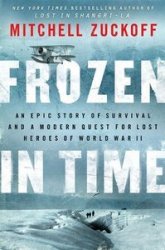In command of the South Front. After initial reverses against the German defence line along the River Mius, Tolbukhin’s forces broke through in September and liberated the Donbass industrial area before freeing the Crimea in April 1944. The next month Tol-bukhin was appointed commander of the Third Ukrainian Front and entered into a period of victories that was to last until the end of the war. Working in concert with Marshal Malinovsky’s Second Ukrainian Front, he encircled five German corps at Jassy-Kishinev before his forces advanced into Romania and Bulgaria. He liberated three capital cities, Belgrade, Budapest and Vienna before the German surrender. MS.
Tompkins, Maj Gen Rathvon McCall (b. l912). US. Assumed command of the US Marine 3rd Division in December 1967 after the death of Gen Bruno Hochmuth. That change placed Tompkins in charge of forces, under Col David Lownds, defending Khe Sanh combat base in Vietnam just before the North Vietnamese besieged it. Tompkins subscribed to Gen Westmoreland’s concept of using Khe Sanh as a bait to “lure the enemy to their deaths”.
Tonkin Gulf incident (1964). Apparently in reaction to American and South Vietnamese activities along North Vietnam’s coast, three North Vietnamese patrol boats intercepted the American destroyer Maddox outside the North’s 12-mile (19km) limit on August 2 1964. The North Vietnamese fired two torpedoes at the Maddox, which returned fire, disabling one of the boats and damaging another. In bad weather on the evening of the 4th, the Maddox, joined by a second destroyer, the C Turner Joy, reported radar contact with five boats, called in air support and fired on unseen targets. Known collectively as the Tonkin Gulf Incident, these events supplied President Johnson with a pretext to extract the Southeast Asia Resolution from Congress, which gave him the authority to respond as he felt necessary, but avoided declaring outright war. It emerged that the attack on the 4th never took place. Congress revoked the resolution. May 1970.
Torgau. German town on Elbe; scene of link-up between US and Soviet units, April 25 1945.
Torpedoes. Around 1900, the introduction of gyroscopic control and of “steam heating” propulsion enabled torpedo performance to keep up with increase in fighting ranges. First successful use of aircraft torpedo 1915. Japanese adoption of large oxygen-driven “Long Lance” torpedoes with great performance — and also reloading arrangements - gave them an advantage in the Pacific War. Italians first to use “human torpedoes”, copied by British for attacks on enemy harbours. Germans and Japanese used manned torpedoes at sea. Anglo-Americans and Germans both developed acoustic torpedoes, first used in 1943, which have led to true underwater-guided missiles like the modern British “Tigerfish”. DJL.
Total war. A war in which all available resources, civil and military, of manpower, technology and wealth are committed to the achievement of a political end by military means (possibly including the limited use of nuclear weapons, as in World War II). See
Also ABSOLUTE WAR, LIMITED WAR.
Totensonntag (All Souls Day), Battle of (November 23 1941). The Afrika Korps overran 5th South African Brigade south of Sidi Re-zegh. Losses were high on both sides, but those suffered by the Germans started the erosion of their forces, which led to Rommel raising the siege of Tobruk.
Tou Morong, Battle of (1966). The surrounding of a South Vietnamese Regional Force outpost at Tou Morong in Kontum province by the North Vietnamese 24th Regiment triggered Operation “Hawthorne”/“Dan Tang 61” in June 1966. The US First Brigade, 101st Airborne Division, and two ARVN battalions relieved the garrison on the 6th, but an attack on a detached American company resulted in heavy fighting with entrenched North Vietnamese. After 463 air strikes, 36 B-52 sorties and the dumping of 900 CS gas grenades, the North Vietnamese withdrew, having suffered 531 “known” casualties.
Toulon. Main French Mediterranean naval base. In 1942 most of the French fleet was assembled here. The Germans tried to take over on November 27; Adm Laborde’s instructions were followed and 3 battleships, 7 cruisers and 32 destroyers were scuttled; a few lighter ships got away to join the Allies.
Tovey, Adm of the Fleet Sir John Cronyn (1886-1971). Br. After distinguished and extensive service in command of destroyers 1914—18, especially Onslow at Jutland, he reached flag rank in 1935; was made Rear Adm, destroyers then second in command of Mediterranean Fleet (1939). As c-in-c Home Fleet (October 1940-May 1943), his greatest single achievement was the hunting down and sinking of the Bismarck. Responsible for the Russian convoys, he protested against Admiralty interference which resulted in the PQ 17 disaster. He held the Nore command (1943-45) and assisted in the preparations for D-Day. CJWICD.
TOW missile. American anti-tank missile automatically commanded to the line of sight of the aimer. The name stands for “Tube launched, Optically tracked. Wire guided”. Maximum range is 12,300ft (3,750m); can be carried on vehicles or helicopters.
Townshend, Maj Gen Sir Charles
(1861-1924). Br. See Mesopotamian CAMPAIGN (1914-18).
Toyoda, Adm Soemu (18851957). Jap. Succeeded Koga as c-in-c. Combined Fleet, April
1944. Although a cautious strategist, Toyoda firmly espoused the “decisive battle” concept, presiding over the disastrous operations that led to the destruction of Japan’s naval air power in the Philippine Sea and of her surviving naval strength at Leyte Gulf. In desperate attempts to retain Okinawa, April 1945, Toyoda ordered the Yamato’s “death ride” and the kikusui mass kamikaze attacks. Replaced as c-in-c by Ozawa, May
1945. he became Naval cos, opposing Japan’s surrender but retaining office until accused of war crimes (tried and acquitted) in
1946. ROW.




 World History
World History









